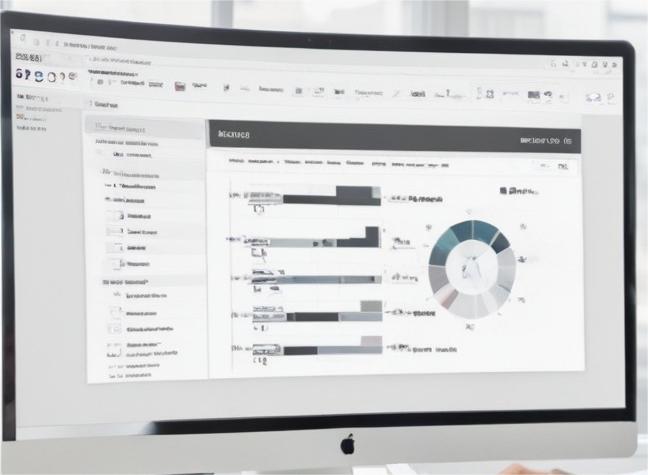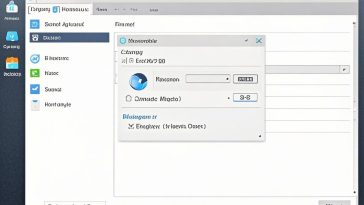Introduction
A Likert scale is a widely used rating scale in surveys and questionnaires that measures attitudes, opinions, or perceptions by presenting a series of statements and asking respondents to indicate their level of agreement or disagreement. Likert scales are valuable tools for gathering quantitative data in various fields, including psychology, marketing, and social sciences.
Creating Likert scales in Microsoft Word allows you to design customized scales tailored to your specific research or data collection needs. Word’s formatting and layout tools provide flexibility in structuring and presenting the scale statements and response options. In this tutorial, we’ll explore how to create effective Likert scales in Word from scratch.
Understanding the Likert Scale Structure
Before diving into the creation process, it’s essential to understand the fundamental components and types of Likert scales.
Components of a Likert Scale
- Scale statements or questions: These are the items or prompts that respondents will rate based on their level of agreement or disagreement.
- Response options (levels of agreement/disagreement): These are the predetermined choices or categories that respondents can select to indicate their stance on each statement. Common options include “Strongly Disagree,” “Disagree,” “Neutral,” “Agree,” and “Strongly Agree.”
- Numbering or coding system: Each response option is typically assigned a numerical value or code for data analysis purposes (e.g., 1 = Strongly Disagree, 2 = Disagree, 3 = Neutral, 4 = Agree, 5 = Strongly Agree).
Types of Likert Scales
Likert scales can have an odd or even number of response options, each with its own advantages and considerations.
- Odd-numbered scales (e.g., 5-point, 7-point): These scales include a middle or neutral option, allowing respondents to express a neutral stance or lack of opinion on a statement.
- Even-numbered scales (e.g., 4-point, 6-point): These scales force respondents to take a stance by eliminating the neutral option, which can be useful in situations where a neutral response is undesirable or irrelevant.
Additionally, Likert scales can be balanced or unbalanced. Balanced scales have an equal number of positive and negative response options, while unbalanced scales may have more positive or negative options, potentially introducing bias.
Setting Up the Likert Scale in Word
Creating a Table
The first step in creating a Likert scale in Word is to insert a table that will serve as the foundation for the scale structure.
- Open a new Word document or navigate to the desired location in an existing document.
- Go to the “Insert” tab and click on the “Table” button.
- In the “Insert Table” dialog box, specify the number of columns and rows you need for your scale. For a basic 5-point Likert scale with one statement per row, you might choose 2 columns and the desired number of rows (one row for each statement, plus an additional row for column headings).
- Once the table is inserted, you can adjust its properties by right-clicking on the table and selecting “Table Properties.”
Entering Scale Statements and Response Options
With the table in place, you can begin entering the scale statements and response options.
- In the first column of the table, type or paste your scale statements or questions, one per row.
- In the second column, enter the response options (e.g., “Strongly Disagree,” “Disagree,” “Neutral,” “Agree,” “Strongly Agree”) horizontally across the row.
- Adjust the formatting of the table cells as needed, such as font style, size, and alignment, to ensure readability and consistency.
Customizing the Likert Scale Design
While a basic table structure can work for a Likert scale, customizing the design can enhance its visual appeal and clarity.
Applying Styles and Formatting
- Select the table cells containing the scale statements or response options.
- Go to the “Home” tab and use the various font formatting options (e.g., bold, italics, font size, color) to emphasize or differentiate the text as desired.
- Apply borders or shading to the table cells by selecting the cells, going to the “Design” tab under “Table Tools,” and choosing the desired border style or shading color from the respective dropdown menus.
Using Numbered Lists or Checkboxes
Instead of typing out the response options, you can use numbered lists or checkboxes/radio buttons to represent the levels of agreement or disagreement.
- For numbered lists, select the cells where you want to insert the list, go to the “Home” tab, and click on the “Numbered List” button.
- To insert checkboxes or radio buttons, place your cursor in the desired cell, go to the “Developer” tab (if not visible, go to “File” > “Options” > “Customize Ribbon” and check the “Developer” box), and click on the “Check Box Content Control” or “Rich Text Content Control” button.
Incorporating Instructions and Additional Information
To provide context and guidance for respondents, you may want to include instructions or additional information above or below the Likert scale.
- Position your cursor above or below the table and type the instructions or explanations.
- You can also include scale anchors or descriptors (e.g., “Strongly Disagree” and “Strongly Agree” at the opposite ends of the response options) by merging cells or inserting text boxes.
Advanced Techniques
Merging Cells for Headings or Subheadings
If you have multiple sections or subheadings within your Likert scale, you can merge table cells to create headings or subheadings.
- Select the cells you want to merge.
- Go to the “Layout” tab under “Table Tools” and click on the “Merge Cells” button.
- Type the heading or subheading text in the merged cell and format it as desired (e.g., bold, centered, larger font size).
Repeating Row or Column Headings on Multiple Pages
If your Likert scale spans multiple pages, you can set up Word to automatically repeat the row or column headings on subsequent pages for better readability and navigation.
- Select the table by clicking on the table move handle (the icon at the top-left corner of the table).
- Go to the “Layout” tab under “Table Tools” and check the “Repeat Header Rows” box.
- Word will now repeat the top row(s) containing your column headings (e.g., response options) on subsequent pages.
Converting the Scale to a Form or Template
To protect your Likert scale from unintended changes or for easy reuse, you can convert it to a form or save it as a Word template.
- To convert the scale to a form, go to the “Developer” tab and click on the “Design Mode” button. This will allow you to protect certain parts of the document from editing.
- To save the scale as a template, go to “File” > “Save As” and choose the “Word Template” format (*.dotx) from the “Save as type” dropdown menu.
Tips and Best Practices
- Ensure that your scale statements or questions are clear, concise, and unambiguous to avoid confusion or misinterpretation.
- Maintain consistent formatting and spacing for the response options throughout the scale to improve readability and prevent respondent errors.
- Consider the appropriate length of your Likert scale. While longer scales may provide more nuanced data, excessively long scales can lead to respondent fatigue or biased responses.
- Test and proofread your Likert scale thoroughly before distribution to identify and correct any errors or inconsistencies.
Conclusion
Creating Likert scales in Microsoft Word allows you to design customized rating scales tailored to your specific research or data collection needs. By following the steps outlined in this tutorial, you can set up the scale structure, customize the design, incorporate advanced features, and adhere to best practices for effective scale creation.
Remember, the quality of your Likert scale directly impacts the reliability and validity of the data you collect. Don’t hesitate to experiment with different design elements, formatting options, and layout techniques to create a visually appealing and user-friendly scale that encourages accurate and thoughtful responses from your target audience.






